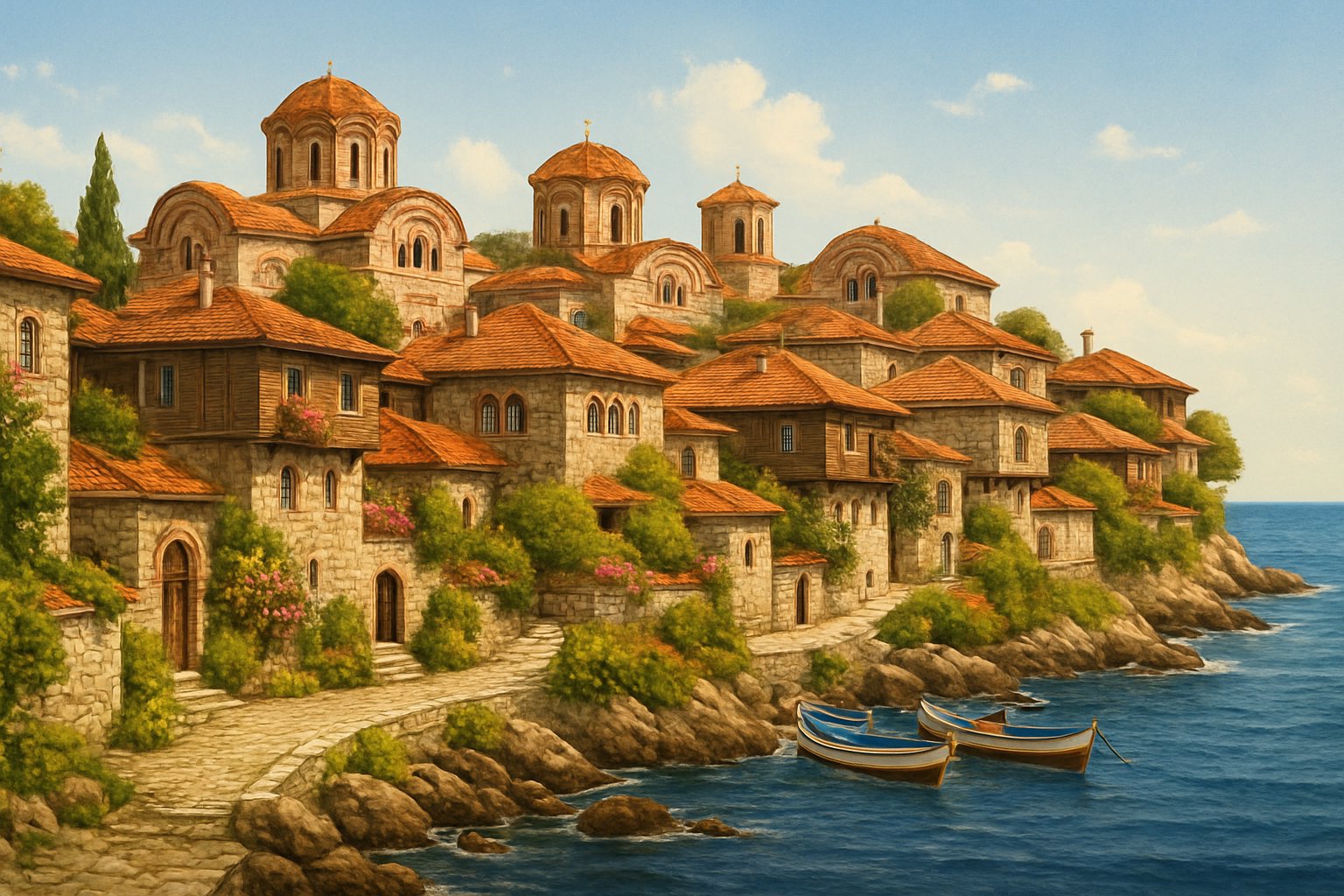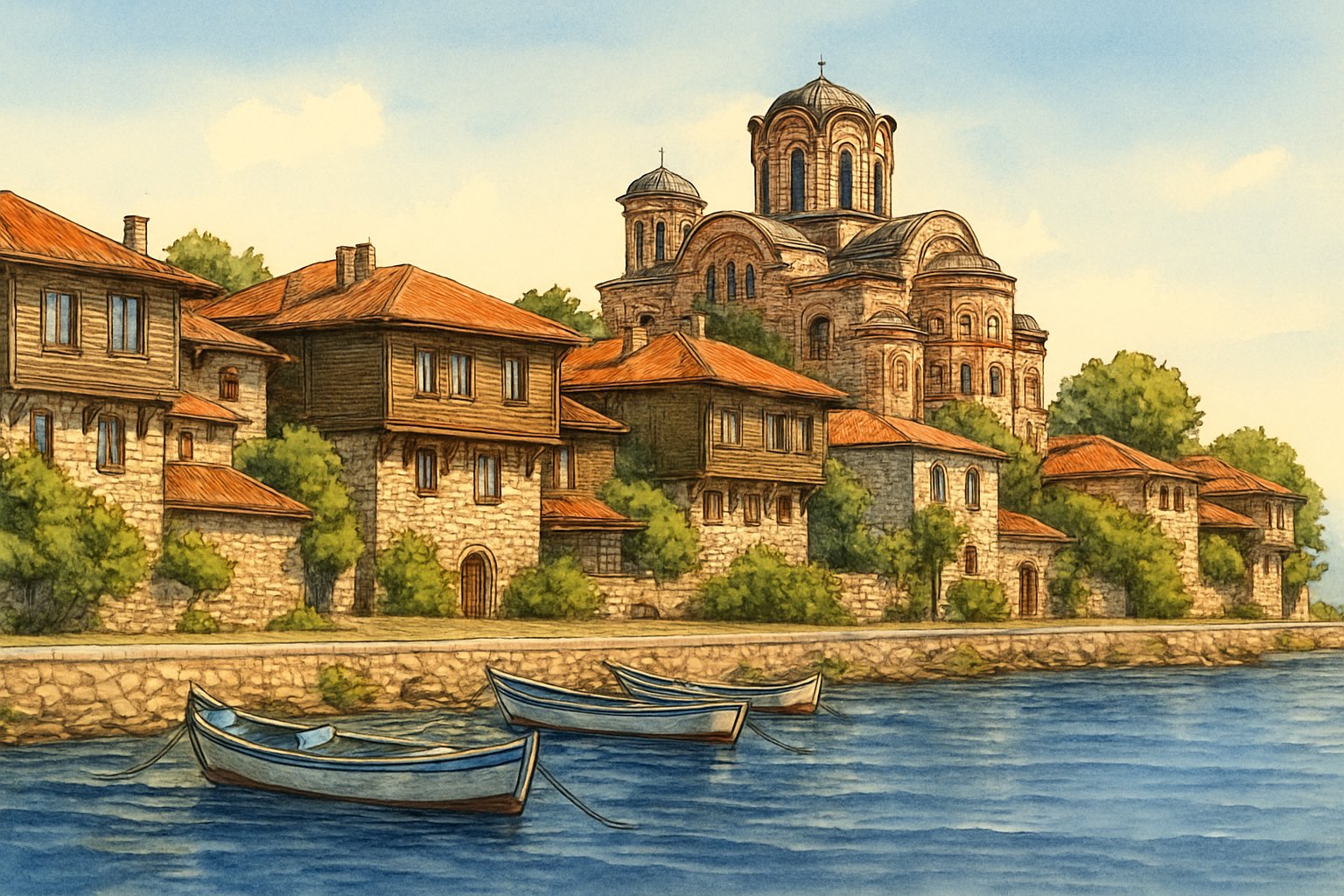Nessebar is one of Bulgaria’s most captivating spots, where ancient history somehow meshes with modern seaside charm on the Black Sea. This ancient city and major seaside resort gives visitors an experience you won’t really find anywhere else in Europe.

We find ourselves drawn to Nessebar because it perfectly combines thousands of years of history with beautiful beaches and vibrant local culture. The town sits on a narrow peninsula in Burgas Province. It’s both a UNESCO World Heritage Site and a popular beach destination.
From wandering through medieval churches to enjoying fresh seafood, Nessebar gives us endless ways to get a taste of real Bulgarian coastal life.
1) Nessebar
Nessebar is a lovely coastal town perched on a small peninsula on Bulgaria’s Black Sea. The town splits into two parts: a modern area and the historic Old Town.
The Old Town is the real heart of Nessebar. Ancient stone streets weave between medieval churches and old wooden houses.
We wandered along narrow cobblestone paths that have existed for centuries. Driving here takes some planning—cars can’t really enter the historic peninsula freely.
Hotels can get you a one-hour parking permit for check-in and check-out, but after that, you’ll need to move your car to the main parking lots. The town really feels like a step back in time.
Byzantine walls still guard the entrance, and small churches are tucked all over the place. Local restaurants serve up fresh seafood by the water, and little shops sell handmade crafts and souvenirs.
Location: Nessebar, Bulgaria
Website: Visit Website
Historical Overview of Nessebar
Nessebar is one of Europe’s oldest cities, with over 3,000 years of history. It earned its UNESCO World Heritage Site status in 1983.
The city’s prime location drew in powerful civilizations—Thracians, Greeks, Romans—all of whom left their mark.
Ancient Origins and UNESCO Heritage
Nessebar’s story goes back more than 3,200 years. It started as a settlement on the Black Sea coast.
The ancient city was once on a bigger island, but over time, rising sea levels swallowed up about a third of its original territory.
These days, the old town sits on a small peninsula only 850 meters long and 350 meters wide. A narrow strip of land connects it to the mainland.
UNESCO recognized Nessebar as Bulgaria’s only town on the World Cultural Heritage list. Monuments from different eras still stand inside its old walls.
The mix of ancient history, medieval architecture, and seaside scenery gives Nessebar something special. Its wooden houses and medieval churches really make the town feel like a living museum.
Influence of Thracian, Greek, and Roman Civilizations
The Thracians were the first to settle here, calling it Mesembria. This ancient Thracian settlement laid the groundwork for today’s town.
Greek colonists showed up in the early 6th century BC and turned it into a busy trading hub. They brought their own building styles and customs, which you can still spot in the city’s layout.
Key Historical Periods:
- Thracian Era: Original settlement as Mesembria
- Greek Period: 6th century BC colonization and trade development
- Roman Rule: Continued importance as coastal trading center
The Romans took over later and added their own architecture and ways of running things. Every civilization left something behind—buildings, streets, traditions.
You can see this layered history all over the old town, where different eras of architecture blend together. The influence of these cultures shaped Nessebar into the fascinating place it is now.
Modern Culture and Local Life
Nessebar’s cultural life is a mix of ancient traditions and modern seaside living. Local culture and traditions thrive alongside the tourist scene.
The town celebrates its roots with festivals, and you can find authentic Bulgarian food in cozy restaurants and cafes.
Traditional Festivals and Events
Nessebar’s festival calendar is packed with events that show off its cultural heritage. The town hosts several annual celebrations highlighting Bulgarian customs.
In summer, music festivals and cultural gatherings take over the town square and waterfront. You’ll catch traditional Bulgarian folk music and dance.
Religious festivals are a big deal here. The town’s many churches hold Orthodox Christian celebrations throughout the year.
Local craft demos pop up often in the old town. We watched artisans making pottery, woodwork, and textiles using old-school methods.
The architecture and way of life really come alive during these events. It’s a great way to get a feel for authentic Bulgarian traditions.
Cuisine and Culinary Experiences
Nessebar’s restaurants serve up classic Bulgarian dishes and fresh Black Sea seafood. The food scene mixes old recipes with a bit of modern flair.
Fresh fish and seafood are everywhere. Local favorites? Grilled sea bass, mussels, and a fish soup made with regional spices.
Bulgarian specialties we tried include:
- Shopska salad with local tomatoes and cheese
- Banitsa (flaky pastry with cheese)
- Kebapche (grilled meat rolls)
- Rakia (traditional fruit brandy)
Many restaurants are tucked inside old buildings in the historic center. Eating here means you get a meal and a taste of medieval architecture at the same time.
The small restaurant business keeps local traditions alive. Family-run places often serve recipes handed down through generations.
Frequently Asked Questions

We’ve pulled together answers to the most common questions about visiting this historic seaside town. From ancient churches to beaches and festivals, here’s what you might want to know.
What are the must-see attractions in Old Town Nessebar?
Old Town boasts over 40 medieval churches dating from the 5th to 17th centuries. The Church of Christ Pantocrator and the Church of St. Stephen are especially well-preserved.
We recommend stopping by the Archaeological Museum to check out artifacts from the city’s 3,000-year history. You’ll see Thracian, Greek, Roman, and Byzantine relics.
The ancient city walls offer awesome views of the Black Sea. Wander the cobblestone streets to see those classic wooden houses from the 19th century.
Can you recommend any events or festivals happening in Nessebar?
Cultural events pop up all summer, from June to September. Traditional Bulgarian folk festivals fill the Old Town squares.
Music concerts often take place in ancient churches and outdoor spots. The UNESCO World Heritage status makes it a go-to spot for cultural celebrations.
We suggest checking with local tourism offices for up-to-date schedules. Many festivals celebrate the city’s Greek, Roman, and Bulgarian roots.
What UNESCO World Heritage Sites can be found in or near Nessebar, Bulgaria?
Old Town Nessebar is a UNESCO World Heritage Site because of its incredible historical value. The designation protects the medieval buildings and archaeological sites.
The site includes ancient city walls, Byzantine churches, and those classic wooden houses. UNESCO recognized it for showing more than 3,000 years of human settlement.
The protected zone covers the entire Old Town peninsula. Nessebar is easily one of Bulgaria’s most important heritage sites.
What are some interesting historical facts about Nessebar?
Nessebar started as a Thracian settlement called Mesembria about 3,000 years ago. The Greeks arrived in the 6th century BC and set up a colony.
The city became a key trading port during Roman and Byzantine times. It sat right on the Black Sea trade routes.
Nessebar is one of Europe’s oldest cities that’s been lived in continuously. The name “Pearl of the Black Sea” comes from its rich culture and gorgeous setting.
Are there good beaches to visit in Nessebar and what are they like?
Nessebar’s beaches have calm Black Sea waters, perfect for swimming and relaxing. Sandy stretches run along the peninsula and the mainland.
South Beach is a bit quieter, with fewer people. North Beach connects to Sunny Beach resort, which has more facilities and activities.
Water temperatures are warmest from June through September. During peak season, you’ll find equipment rentals and beachside restaurants.
When visiting Nessebar, what are some tips for staying safe and enjoying the trip?
The best time to visit is from May to September. The weather’s usually warm and sunny, so you can really make the most of beach days and wandering around.
Pack a pair of comfy walking shoes. Those cobblestone streets in the Old Town can get pretty uneven, but they’re totally walkable if you’re prepared.
In summer, the sun can be relentless along the coast. Don’t forget sunscreen, and maybe a hat. It’s smart to grab some water and look for shady spots when you’re checking out all those old ruins and churches.

